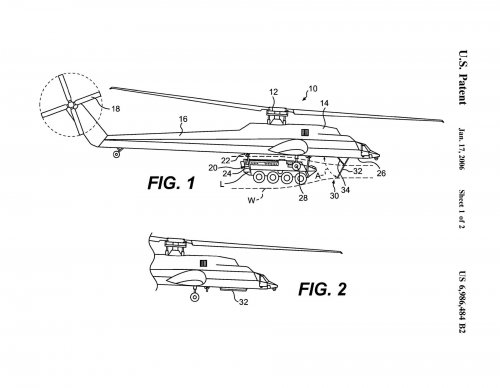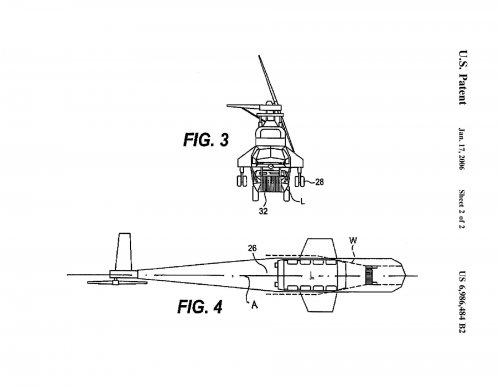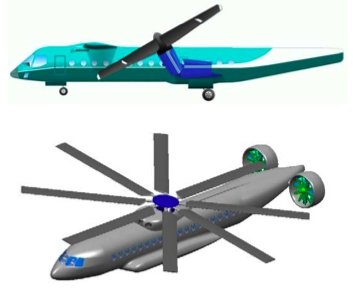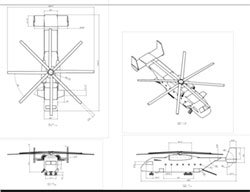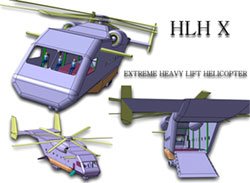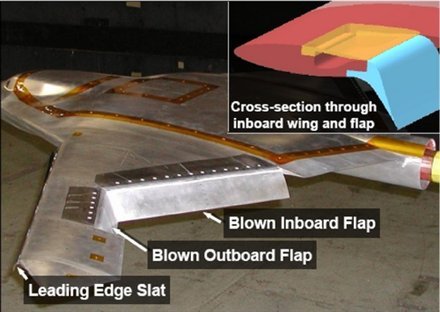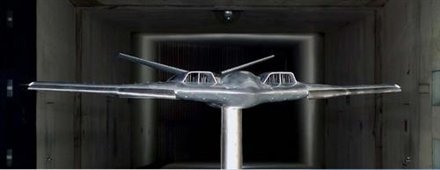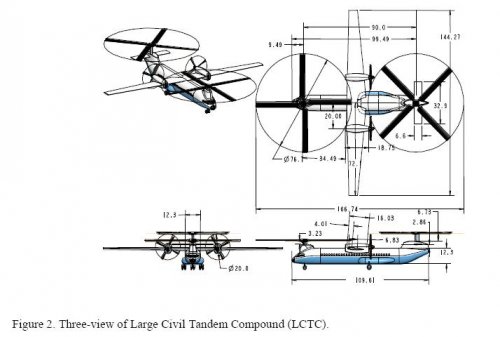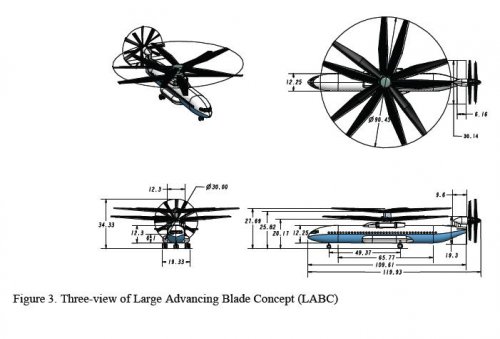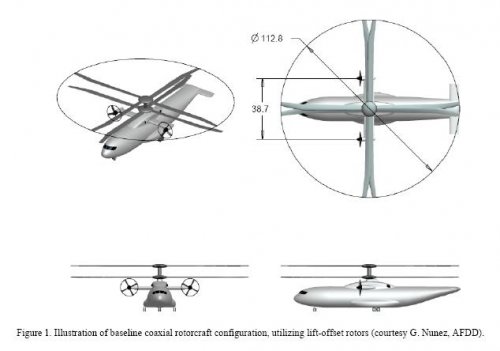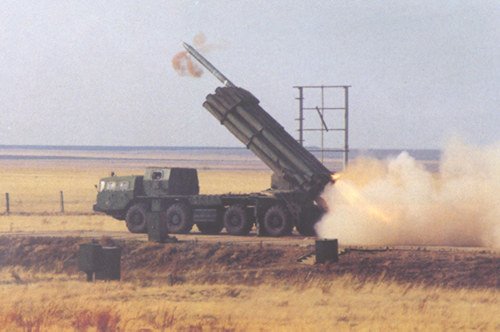A couple of recent NASA research papers...
Which are not called out. Grr. However, I've guessing he means these (and maybe others)
http://ntrs.nasa.gov/search.jsp?R=648741&id=7&qs=Ntt%3Dflaps%26Ntk%3Dall%26Ntx%3Dmode%2520matchall%26N%3D0%26Ns%3DPublicationYear%257c1
Wind Tunnel Testing of Powered Lift, All-Wing STOL Model
Abstract: Short take-off and landing (STOL) systems can offer significant capabilities to warfighters and, for civil operators thriving on maximizing efficiencies they can improve airspace use while containing noise within airport environments. In order to provide data for next generation systems, a wind tunnel test of an all-wing cruise efficient, short take-off and landing (CE STOL) configuration was conducted in the National Aeronautics and Space Administration (NASA) Langley Research Center (LaRC) 14- by 22-foot Subsonic Wind Tunnel. The test s purpose was to mature the aerodynamic aspects of an integrated powered lift system within an advanced mobility configuration capable of CE STOL. The full-span model made use of steady flap blowing and a lifting centerbody to achieve high lift coefficients. The test occurred during April through June of 2007 and included objectives for advancing the state-of-the-art of powered lift testing through gathering force and moment data, on-body pressure data, and off-body flow field measurements during automatically controlled blowing conditions. Data were obtained for variations in model configuration, angles of attack and sideslip, blowing coefficient, and height above ground. The database produced by this effort is being used to advance design techniques and computational tools for developing systems with integrated powered lift technologies.
and
http://ntrs.nasa.gov/search.jsp?R=364025&id=9&qs=Ntt%3Dflaps%26Ntk%3Dall%26Ntx%3Dmode%2520matchall%26N%3D0%26Ns%3DPublicationYear%257c1
Flow-Field Measurement of a Hybrid Wing Body Model with Blown Flaps
Abstract: In this paper we describe flow-field measurements obtained in the wake of a full-span Hybrid Wing Body model with internally blown flaps. The test was performed at the NASA Langley 14 x 22 Foot Subsonic Tunnel at low speeds. Off-body measurements were obtained with a 7-hole probe rake survey system. Three model configurations were investigated. At 0deg angle of attack the surveys were completed with 0deg and 60deg flap deflections. At 10deg angle of attack the wake surveys were completed with a slat and a 60deg flap deflection. The 7-hole probe results further quantified two known swirling regions (downstream of the outboard flap edge and the inboard/outboard flap juncture) for the 60deg flap cases with blowing. Flow-field results and the general trends are very similar for the two blowing cases at nozzle pressure ratios of 1.37 and 1.56. High downwash velocities correlated with the enhanced lift for the 60deg flap cases with blowing. Jet-induced effects are the largest at the most inboard station for all (three) velocity components due in part to the larger inboard slot height. The experimental data are being used to improve computational tools for high-lift wings with integrated powered-lift technologies.
These are, irritatingly, not available for download from the NTRS site. They were presented at the International Powered Lift Conference in London last July. You can buy the proceedings here: http://www.aerosociety.com/conference/iplc.html for the low, low price of £175.00.
Let me know how that goes.

